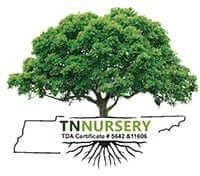
Growing Dwarf Fruit Trees in Your Native Garden
Share
Imagine you’ve always wanted to grow your own fruit trees. You love fresh fruit, you like being able to give them to friends and family, and you’re committed to being responsible. But you never thought you had the space or time to do it.
Dwarf fruit trees are the answer. They’re everything you’d expect from full-size fruit trees, but are perfectly sized for small yards, patios, or even container gardening. Plus, when paired with native plants, they’re a serious force multiplier in terms of supporting wildlife and adding to the health of your entire landscape.
What are Dwarf Fruit Trees?
So what are these trees? Dwarf fruit trees are selectively bred or grafted to remain small. Rather than reaching 25+ feet tall, they top out at around 8-10 feet. That’s why they’re great for people with little room, new gardeners, and those with a busy lifestyle. You can easily reach them for pruning and harvesting, and because they bear fruit sooner than standard trees, you can start enjoying the fruits of your labor quicker.
We’ve got dwarf trees that are right for homes all over multiple USDA hardiness zones at TN Nursery.
The Native Advantage: Why Pair Dwarf Fruit Trees with Native Plants?
Growing these trees is great, but the real secret sauce is when you add in native plants. They provide an incredible amount of benefits to native bees, butterflies, and birds that simply aren’t available from non-native plants. Additionally, they’re well-suited to your local environment, meaning they don’t need as much water, fertilizer, and absolutely no pesticides.
So, under your dwarf apple or cherry tree, consider some native groundcovers like Partridge Berry (Mitchella repens) or Wild Strawberry (Fragaria virginiana). These native plants are both low-growing, pollinator-friendly, and can control weeds on their own. By adding in these natives, you’re diversifying the species in your space and attracting beneficial insects to take care of your trees for you.
According to the University of Florida IFAS Extension, adding in native plants in your landscape creates ecological balance and increases long-term health of your landscape.
Best Dwarf Fruit Trees for Home Gardens
Let’s take a look at some of the most popular dwarf fruit tree varieties for your garden:
Dwarf Apple Trees
One of the most common fruit trees people start with, apple trees are grafted onto dwarf rootstocks to keep them compact. You’ll need two compatible varieties to pollinate your trees, so make sure to plant at least two. To attract pollinators, pair with native wildflowers like Monarda (Bee Balm).
Dwarf Cherry Trees
You can find sweet and sour cherry trees in dwarf varieties for containers or tight garden spaces. You’ll find they attract bees in spring and then feed the birds and yourself in summer. Surround them with Columbine (Aquilegia canadensis), a native beauty that loves partial shade and supports hummingbirds.
Dwarf Peach Trees
Perfect for sunny spots, dwarf peach trees like ‘El Dorado’ or ‘Bonanza’ bear juicy fruit and fragrant blossoms. Like their neighbors, they love company, so try surrounding them with Butterfly Weed (Asclepias tuberosa) to draw in monarch butterflies and other beneficial insects.
Native Companion Planting: a Quick Pairing Guide
While your trees don’t need to be alone, here are some natives that complement your dwarf trees while playing functional roles as well:
Goat’s Beard (Aruncus dioicus) – An impressive native perennial that draws in pollinators and fills in underneath tree canopies.
Solomon’s Seal (Polygonatum biflorum) – An easy-going native that likes dappled shade and can help hold back weeds around your tree roots.
Goldenrod (Solidago spp.) – Late season nectar source for pollinators that can extend the productivity of your garden ecosystem.
Wild Ginger (Asarum canadense) – Shade-tolerant groundcover that can be used as mulch around the base of your fruit tree.
How to Grow a Mini Orchard in a Small Space
You don’t need acres to grow an orchard. In fact, with dwarf fruit trees and native understory plants, you can have a thriving food forest in your small suburban yard or even a balcony. You can use raised beds or big pots if your soil is poor or if you’re limited to a paved space. As long as they get at least 6-8 hours of sun a day, and are planted in good soil, you’re good to go.
We have a Premium Fruit Tree Starter Kit at TN Nursery that includes everything you need to start your tree off on the right foot, including soil amendments and planting instructions.
Native Wildlife and Pollinator Benefits
Dwarf trees can bloom early in the spring to provide one of the first nectar sources for emerging pollinators. They can also provide food for local wildlife, such as birds, squirrels, and even deer (so make sure to think about fencing if that’s a concern in your area).
When you choose natives, you’re also providing host plants for butterfly larvae, nectar plants for bees, and homes for small animals. So, while you’re providing for yourself, your garden becomes a living, breathing system.
A Smart, Sustainable Choice
Dwarf fruit trees are an ideal solution for the gardener who wants to grow their own food and care for the local ecosystem. They provide balance, productivity, and beauty to your garden space, regardless of how much space you have. They’re low-maintenance, eco-friendly, and offer years of delicious results.
At TN Nursery, we grow and ship bare-root dwarf fruit trees and native perennials that go great together. We choose every plant with your success in mind, and we’re here to help you grow a landscape that’s edible and ecological.
Are you ready to transform your yard into a native fruiting paradise? Browse our selection of dwarf trees and natives at TN Nursery today!
